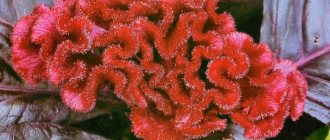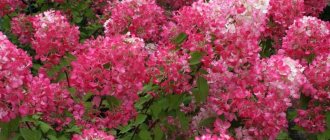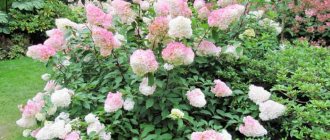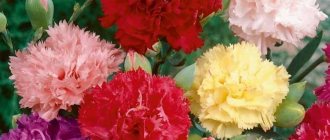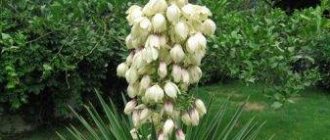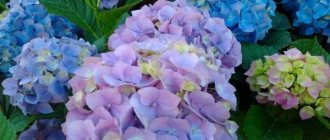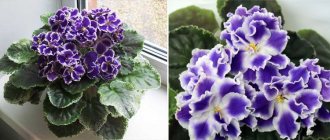The beautiful celosia or scallop is familiar to many from childhood. Resembling a luxurious terry cock's comb, it has repeatedly delighted us, surprising us with its whimsical appearance. Perhaps no other plant has such a variety of shapes, colors and sizes. But the seed of both the smallest and the giants is exactly the same - a black dense pea less than 1 mm in diameter. What grows from this almost invisible pea depends on the type of celosia.
If you have this coquette in your flowerbed, we warn you that everyone who passes by will ask you about this beauty. Are you ready for this attention? If yes, then you should definitely try it.
Description of celosia comb
Comb celosia (Celosia cristata) is a plant of the Amaranthaceae family, reaching an average height of 70 cm. It has thick and branched erect stems of reddish or green color. The leaves of the crop are entire, with pointed ends, oval or elongated, arranged on the shoots in an alternate order. Depending on the variety, the plates are not only green, but also purple or golden.
During the decorative period, comb celosia bears dense inflorescences consisting of small buds. The width of the panicles can reach 8 cm. The edges of the inflorescences are strongly curved in waves and resemble cockscombs, which explains the name of the variety. The color of the panicles can be scarlet, red, orange, yellow or lilac.
Flowering period of celosia comb
In landscape design, comb celosia is valued for its long flowering. Most varieties bloom in mid-June and remain decorative until early November.
Celosia comb - perennial or annual
Comb celosia belongs to the category of perennial plants. However, it does not tolerate even slight frosts in open ground. Therefore, on the territory of Russia, the crop is usually bred as an annual plant and is re-sown with seeds every season.
Appearance of crown-tailed bettas
Crowntails differ from other aquarium fish by having a very unusually shaped tail fin. Thanks to the reduced membrane between the rays, they become more visible, and the fin itself looks like a crown with teeth.
As for the color of bettas, it can be very different, but the most common fish are dark red/blue. Males can have pastel colors, bright metallic notes, and even be albino.
Types of crown-tailed bettas
Based on the specific shape of the caudal fin, bettas are divided into several types. Let's get to know them.
Classification of crown-tailed cockerels:
Single ray These fish have straight and long fin rays (crown tails resemble a comb).
Double ray These fish, as you might guess from the name, have 2 rays on their tail. They are connected to each other by a membrane, and at the ends they form a kind of two-pronged fork.
Cross rays The most unusual type. The rays come in pairs, and at the ends they intersect with others. Thanks to this, the fish look like multi-colored snowflakes.
The circumference of a cockerel's unfurled tail can reach 180°. Female fish have a smaller circumference - a maximum of 130°.
Varieties of celosia comb
Photos of comb celosia in a flowerbed demonstrate the diversity of annual varieties. You can name several of the most popular types.
Impress
The dwarf variety grows to only 25 cm above the ground. The leaves of the plant are dark, with red veins, and the inflorescences are wine-red or deep burgundy.
Celosia Impress blooms in mid-June
Empress
The popular variety produces deep purple inflorescences with a crimson tint. The decorative effect is enhanced by beautiful purple-green leaves. The variety is unpretentious and tolerates mild drought and lack of sun.
Celosia Empress grows to an average of 30 cm
Atropurpurea
A miniature variety with light green leaves and a dark stem blooms with burgundy-crimson inflorescences. The panicles are quite large and look bright in the garden, despite the compact size of the annual.
Attention! Celosia Atropurpurea can be grown not only in open soil, but also in pots.
The height of celosia Atropurpurea does not exceed 20 cm
Coral Garden
The medium-sized variety reaches about 50 cm above the ground. Bears relatively small but spectacular panicles of pink-crimson or red-orange hue.
The Coral Garden variety develops well on light soils and is suitable for alpine hills
Unusual Facts About Scallop Flowers
The flowerbed is the most common place where you can find this plant. But there are many other uses for celosia. Considering that it is related to an agricultural crop and at the same time being a super-ornamental plant, celosia is a very intriguing flower. So, a few unusual facts about this plant:
- By its essence and genus, amaranths, to which celosia belongs, are amaranths. It is cultivated as food and raw material for pharmaceuticals. Flour is made from its seeds. If you take a closer look at the grass that is perceived by many as a weed - acorn grass - you will see a striking resemblance to the species that are grown in flower beds.
- Scallops are perfectly preserved after cutting and can be classified as dried flowers , which florists use to create bouquets and displays.
- Celosia can be planted in a home pot and you can admire the bright scallop even in winter. However, the plant is annual .
- Some species of celosia are the size of a tall man. In one season you can get good shade by using this flower to shade some sunny places. The main thing is to water, otherwise it will not reach the desired height.
Reproduction methods
There are two ways to propagate comb celosia on a site. The most common practice is to grow crops from seeds - this method is easy and effective. Planting material is sown in early spring, and closer to summer the seedlings are transferred to open ground.
If desired, cuttings can also be used. In the spring, several shoots of the annual are cut off and placed in a solution of a growth stimulator, and when roots appear, they are transferred to the substrate. After another two weeks, the cuttings can be transplanted to a permanent place in the garden.
The vegetative method for annual celosia is used quite rarely. It is a little more complicated than seed propagation. In addition, plants from cuttings are not highly decorative and do not bloom as profusely.
Celosia care
Celosia seedlings cannot tolerate the soil drying out, so it needs to be watered quite often, and only in the morning. But be careful - excessive soil moisture will not have a beneficial effect on seedlings, whose roots rot very easily.
After planting in the ground, celosia will need to be watered and fed.
After planting in the ground, celosia also needs intensive care - fertilizing and watering:
- fertilizing - once every 3 weeks with a solution of complex mineral fertilizers (15 g of fertilizer per 5 liters of water);
- watering - abundant in the absence of rain and on hot days; With a lack of moisture, celosia does not form new flower stalks.
How to grow celosia comb from seeds
Growing comb celosia at home from seeds is not associated with great difficulties. To get strong seedlings, it is enough to follow the basic rules.
When to sow celosia comb for seedlings
Sowing comb celosia for seedlings is usually done in early or mid-March. Such terms are optimal for the middle zone. By the time the final warming occurs, seedlings from seeds have just enough time to become strong enough to be transferred to the ground.
In Siberia and the Urals, annuals can be planted until the beginning of April. Spring comes late in the region, so seedlings are usually brought to the site in early summer. But in the south it is allowed to sow seeds early in mid-February.
Growing conditions
You can plant comb celosia seedlings either in a common wide and shallow box or directly in individual cups. The latter option is considered preferable, since the crop does not tolerate picking well. In both cases, the height of the containers should not exceed 10 cm.
Comb celosia soil requires loose and light, moderately nutritious. It can be prepared from garden soil, humus and sand, taken in equal volumes. Before sowing seeds, both the container and the substrate must be treated with boiling water or potassium permanganate to remove possible bacteria.
How to sow celosia comb for seedlings
To plant celosia comb seeds for seedlings, you must first prepare the seed. For 3-4 hours, annual grains are soaked in a solution of a growth stimulant to speed up the emergence of seedlings.
The further landing algorithm looks like this:
- A layer of drainage is placed in a common container or cups, and the substrate is poured on top.
- Moisten the soil generously with a spray bottle.
- Spread the seeds over the surface of the substrate, pressing lightly with your fingers.
- Lightly spray the soil again and cover the containers with film.
The seeds should be distributed as evenly as possible, leaving 2-3 cm of space between them. There is no need to sprinkle soil on top of the grains.
Attention! Seeds of comb celosia, if all rules are followed, germinate on average in 5-7 days.
At first, comb celosia from seeds should be germinated at a temperature of about 25 ° C
Aftercare
Planting comb celosia flowers and caring for the seedlings is quite simple. In the first week, containers with seeds are kept warm in diffused light and ventilated daily. When green sprouts appear, you will need to remove the film and move the box or cups to a sunny windowsill. At the same time, seedlings need to be shaded from direct rays to avoid burns.
Care when growing annuals comes down mainly to watering. The soil should not be over-moistened, but it should not dry out completely either. Watering is carried out using a sprayer so as not to erode the soil.
When growing seedlings in a common box, after 2-3 leaves appear on the seedlings, you need to pick. If the seeds were initially sown in individual cups, this stage is skipped and only thinning is carried out - the weakest seedlings are removed.
Comb celosia is planted in open ground in May or early June, depending on the weather. Since the crop does not tolerate even light frosts, it is necessary to wait until the final warmth is established. The site for the annual plant is chosen to be bright and protected from drafts. The soil should be nutritious, but loose and with a low level of acidity. Before planting crops, the soil is dug up and enriched with sand and humus.
The transfer of seedlings into the soil is carried out very carefully, without damaging the roots of the plants. It is advisable to preserve the old earthen lump, in which case the celosia will take root faster.
Subsequent care when growing annuals comes down to several activities:
- Watering. The culture belongs to the category of drought-resistant and is afraid of waterlogging. Watering is carried out only during a long absence of precipitation, when the soil in the flowerbed becomes completely dry.
- Feeding. It is recommended to fertilize the annual plant twice a month with liquid products for garden and indoor flowering crops. The composition should contain mainly phosphorus and potassium.
From time to time it is recommended to weed the soil and loosen it. In this case, the roots of the annual will be able to receive more oxygen, moisture and nutrients.
Attention! When growing comb celosia from seeds, you should not overfeed the crop with nitrogen or fresh organic matter.
Content Rules
Creating good living conditions is the basis of comfort for betta fish. These pets need:
- clean, clear water, it will have to be changed regularly;
- plants on which the fighting Thai will rest;
- interesting decoration of the bottom.
You should avoid immersing sharp objects in the aquarium, otherwise the fins may be damaged. In this case, you can wait a long time for the tail to grow.
You will also need free space - during the day, fish like to play in the water and often stay close to the surface. If you turn off the backlight at night or do not use it, the pet sleeps in the thickets of greenery.
One individual requires at least 3-4 liters of water; it is better if, when kept alone, the tank capacity reaches 10-15 liters.
In a spacious, already stocked aquarium, you can add males of different sexes, or separate compartments for each individual with partitions when keeping a monobreed. Holes are made in them to ensure free flow of water. Plants are planted near the improvised wall to create a feeling of isolated housing for each male. Any aquarium must have a lid - the fish are jumping and curious.
Betta fish can survive without additional heaters. But the optimal values for cockerels, as well as for other tropical species, are considered to be +24… 28 degrees Celsius. Other characteristics of the environment: 6-7.5 pH, hardness not higher than 15 units. As a home remedy for antibacterial treatment, add salt to water - 0.5 tsp is enough for 3 liters of liquid.
Replacing 1/6 of the medium in a small aquarium is necessary up to 10 times a month, in a large aquarium - every 14 days or as needed; bubbles on the surface - a future nest - are removed with other contaminants.
Aeration for labyrinth fish will be unnecessary; it is only needed by fry in the first month of life. But you don’t need to neglect the filter, but just choose a low-power model. These fish do not tolerate strong currents; in nature they live in reservoirs with almost stagnant water. When choosing soil, you should give preference to fine gravel, dark-colored sea or river sand, pre-treated against bacteria and parasites.
Diseases and pests
Comb celosia in open ground and when grown at home can suffer from some ailments and insects. The main dangers for annual plants are:
- black leg - the disease usually develops in young seedlings when the substrate is waterlogged; the root system and shoots at the base begin to rot;
Celosia affected by blackleg must be urgently dug up and destroyed - aphid - an insect that infects crops in large colonies at the beginning of summer, sucks plant juice from leaves and stems;
Aphids on the site often coexist with ants, so pest control must be comprehensive - nematode - a soil parasite that harms roots in open ground, disrupts nutritional processes and causes the death of celosia.
It is impossible to cure comb celosia from nematodes in the later stages; the flowers can only be eliminated
To prevent fungal diseases, it is necessary to monitor, first of all, the degree of soil moisture. Diseases develop most actively in swampy and acidified soil. Too close planting of annuals also contributes to the appearance of fungi. Therefore, when transferring seedlings from seeds to soil, small intervals must be observed.
Spraying with copper sulfate or Bordeaux mixture helps well against crop diseases in the early stages. A soap solution usually allows you to cope with leaf pests; in advanced cases, industrial insecticides are used.
Prevention of blackleg
Seedlings are sensitive to wet soil, which can provoke the appearance of a dangerous fungal disease - blackleg.
Unfortunately, no drugs have yet been invented to treat the disease. If it so happens that the attack has not escaped, all diseased plants must be removed immediately, and the soil in the container should be spilled with a weak solution of potassium permanganate.
For your information! To minimize the risk of blackleg development, it is recommended to sprinkle river sand on the surface of the soil in the container.
Celosia comb in landscape design
Decorative annual plant is widely used in garden design. Typically, comb celosia is planted:
- in solo and multi-component flower beds;
Even miniature varieties of celosia attract attention during the flowering period - in curbs;
A low annual helps to clearly highlight the lines of paths and flower beds - along walls and fences.
Comb celosia decorates empty spaces and enlivens the landscape
The ornamental plant goes well with other crops in the garden. Grasses and conifers, labelia and marigolds successfully coexist with the annual plant.
Celosia care
Caring for celosia begins with seedlings, which cannot tolerate the soil drying out, so it needs to be watered quite often and only in the morning. But be careful when watering - excessive soil moisture will also not have a beneficial effect on seedlings, whose roots rot very easily.
After planting in the ground, celosia also needs intensive care - fertilizing and watering. Celosia needs to be fed once every 3 weeks, using complex mineral fertilizers (15 g of mineral fertilizer per 5 liters of water).
On hot days, celosia plants need plenty of watering. Remember - with a lack of moisture, celosia stops forming new flower stalks.
Irises - cockerel flowers in the country, with photo
The plant is very widespread throughout our country. Irises are very popular both in Ukraine and Moldova, our southern neighbors. It seems that there is not a single village plot where these amazing flowers are not grown. Any summer resident respects cockerels for their huge variety of colors, which, undoubtedly, makes it possible to create various flower arrangements, thereby diversifying the landscape design of the site.
A flower garden with irises can exist in one place for many years without requiring much trouble. Plants like bright open places or some partial shade. We completely gave them two flower beds in front of the fence next to the rowan trees. However, growing in one place for more than one year, betta flowers give a large increase, since these are rhizomatous plants, so it is necessary to periodically separate part of the plant.
We do just that, assigning some to the alpine hill, for its early decoration, where they are adjacent to the begonia planted on the second tier of this structure, and some to the celosias in the flowerbed. We plant the rest in the dacha, placing the planting of irises of different colors further away from each other so that they do not cross-pollinate and lose their original color.
The cockerels look very good mixed with marigolds. They begin to bloom first, and then pass the baton to them. The result is a kind of mixed crops in the country. They respond well to fertilizing with phosphorus and potassium fertilizers. In our practice, we use ash fertilizers and adding sand to the curtains.
This procedure allows you to obtain larger peduncles, and flowering is much longer. Cockerels are probably an indispensable plant for decorative ponds and alpine slides. We must not forget that they react negatively to stagnant water (with the exception of Siberian varieties), so the soil in which the flowers are planted must be well drained.
Review Reviews
Considering reviews from breeders about betta fish, it can be noted that almost all of them consider their pets to be the best choice for keeping at home. Absolutely everyone notes the incredible beauty of this species. Cockerels with a veiled tail look very beautiful and, moreover, do not require special conditions. They are so unpretentious that they can live at room temperature - the water does not need to be heated. In addition, since the fish breathes air when swimming to the surface, many people keep it without aerators or other devices.
Aquarists note that cockerels tolerate cramped living conditions more easily than other breeds. In fact, fish can live both in a decorative glass and in a small round aquarium. But only keeping it in a large aquarium helps reduce its aggressiveness. Females - their lovers call them “hens” - have no less developed territoriality and may well become aggressors themselves. But if the tank is large, the fish do not meet often, and they can coexist quite successfully.
Based on reviews from breeders, it can be judged that cockerels are often chosen as the first pet for children. Indeed, this beautiful fish is interesting to watch; it easily tolerates childhood forgetfulness when feeding, and can go hungry for 1-2 days without harming its health. But it is worth considering that fish do not live long, and you will have to change pets quite often.
Not without negative reviews. Cockerels are not very friendly; they can hardly be called the soul of a large group. This fish is at enmity with its male and female relatives, and the stronger individual will definitely win, leaving the weaker brother without food, driving him into a shelter. Novice aquarists, unaccustomed to such battles, are usually horrified and try to take their pets back to the store. In fact, you just need to remember from the very beginning about the pet’s heightened territorial instincts and not experiment with adding company to the aquarium.
You will learn about proper care for cockerels in the next video.
What to feed?
Feeding is not a problem for the fish as they will eat almost any food. There are different types of food: dry, live and frozen. The proportion of live food should be greater in the diet of fish, since they need protein food.
They happily eat bloodworms and tubifex, daphnia and cyclops, zooplankton and even snails, as well as crushed ordinary earthworms.
The disadvantage of animal food is that it can contain harmful microbes that cause various diseases in bettas.
Frozen is the same live food, but frozen. It is safer because, unlike live food, it does not contain harmful bacteria. Store it in the freezer and, if necessary, separate the required amount for feeding. You should not defrost and refreeze food: it may spoil.
Dry food comes in the form of small granules or flakes. It is recommended to give it less often than live and frozen. Dry food is given according to the order table.
- Regular flake food is given in such a small quantity that the bettas eat it in about 2 minutes.
- Special (for cockerels) granulated food - it can be given daily. It contains properly balanced beneficial elements.
- Tubifex, bloodworms, brine shrimp in dry form.
Different types of food cannot be given at the same feeding: for example, frozen food and dry food, or combine different types of dry food at the same time. You need to adhere to the rule: one feeding - one type of food.
You can supplement your betta's diet with frozen shrimp meat, live insects and their larvae, pre-scalded spinach and lettuce leaves.
Bettas need to be fed 1 or 2 times a day. Adult fish can be fed less frequently, once is enough. During spawning, food is given twice a day, and the fry are also fed. Feed is given at the same time. The fish will gradually develop a reflex, and they will gather near the feeders themselves at feeding time.
The amount of food should not be large: the males should eat it in about 2-5 minutes. Live food is given in the amount of 3-5 worms, and 4-6 pieces of granules are required. in one feeding. Any remaining feed should be removed so that it does not contaminate the water in the container.
It is not recommended to overfeed fish: this leads to their obesity. Every week it is necessary to arrange one fasting day without food.
Digging up bulbs
Eremurus flower. photo
Experienced gardeners strongly advise digging up iris bulbs, especially when it comes to Dutch varieties, otherwise they may rot due to frequent rains. If the bulbs of other early flowers are dug after their leaves are completely dry, then with cockerels you don’t have to wait so long.
As soon as the leaves turn yellow, as a rule, this happens 12-14 days after they bloom, the bulbs can be removed from the ground.
Note!
If the region has a dry summer, that is, rain is unlikely, then it is not necessary to dig up the bulbs during this season.
The dug up bulbs need to be treated with a weak solution of manganese, then dried for 2-3 weeks and stored in a ventilated area.
Planting irises
There is no specific guide on when to plant irises; this can be done both in spring and autumn, taking into account certain nuances.
Pre-plant preparation should not be neglected. You should carefully examine the tuber and, if necessary, remove areas where rot has formed and trim too long roots.
Then it would be a good idea to disinfect it in a solution of potassium permanganate; to do this, mix the preparation with water until it turns pale pink and soak the planting material in it for 30-40 minutes.
This simple procedure will help to avoid further problems with the development of the plant. Another secret to successful planting is that the root can be kept in a Karbofos solution for 30 minutes, due to which the plant will develop stable immunity to pests. The depth of the planting hole for bearded species should be proportional to the tuber; it should not be deepened too much; the top should rise above the ground.
When planting non-bearded irises, the root should be carefully covered with soil. If you plan to plant several plants nearby, you must maintain a distance of at least 60 cm between them.
In fact, autumn planting is not much different from spring planting. It is also recommended to disinfect the roots and remove rotting areas. Let's call these hygiene procedures that will protect the plant in the future.
As for the depth and interval of planting irises, almost everything coincides with the spring one. The only thing that needs to be taken into account is that the tubers should be planted mainly at the end of summer and maximum in the first week of September, this way the plant will take root well before the cold weather and we will get the desired result.
